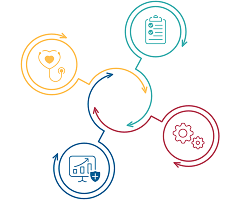Emergency cycle

Outbreaks and health emergencies can happen anywhere, and at any time. This means all countries must prioritize and prepare for all types of health threats.
The WHO Regional Office for Europe’s goal is to strengthen and maintain adequate capacities in the Region to effectively progress through the cycle of prevention, preparedness, response and recovery from public health threats and to provide assistance to affected countries on the ground. This cycle illustrates the continuous process that all organizations and governments should follow to reduce the impact of disasters.
No step is more important than any other: WHO invests in prevention and preparedness as much as in response and recovery, with an emphasis on rehabilitation. Prevention and preparedness can pre-emptively avoid outbreaks, or contain them early on, reduce the possibility of conflicts becoming complex humanitarian health crises, and mitigate the impact of natural disasters. Placing countries at the heart of all preparedness activities ensures that when a crisis strikes, all necessary elements are already in place.
Health emergencies preparedness and health systems strengthening are two sides of the same coin. By developing strong preparedness and response capacities, as defined by the International Health Regulations (IHR) (2005), we develop greater health system resilience and ability to provide universal health coverage, and when health systems are strengthened, we implement the IHR effectively.
Well-managed response operations deliver life-saving health interventions to ensure people have timely access to quality health services, and these operations link directly to the recovery stage when the immediate crisis is past. WHO supports countries to learn from each emergency event, and to “build back better” in their wake, further strengthening their health systems for future health crises.







